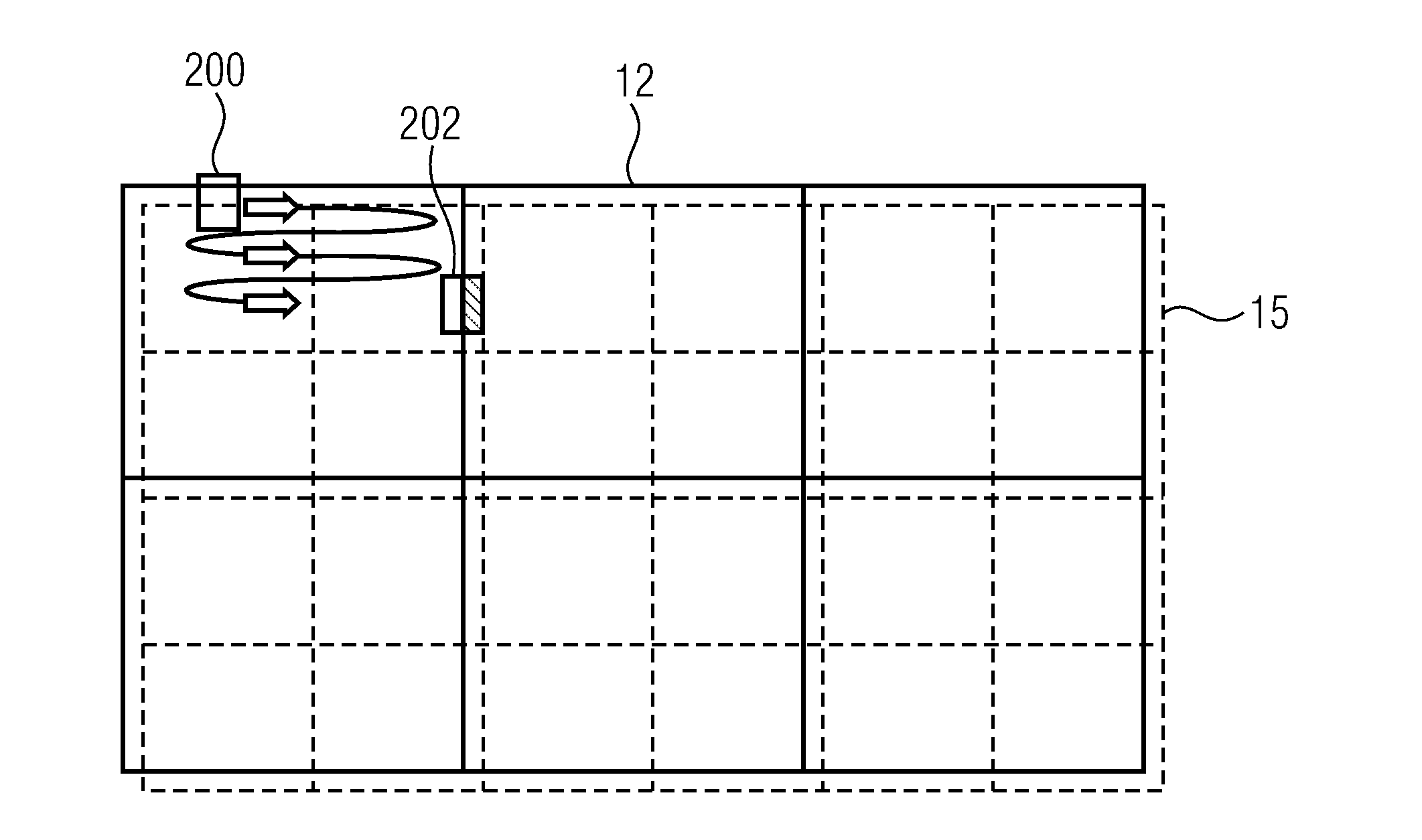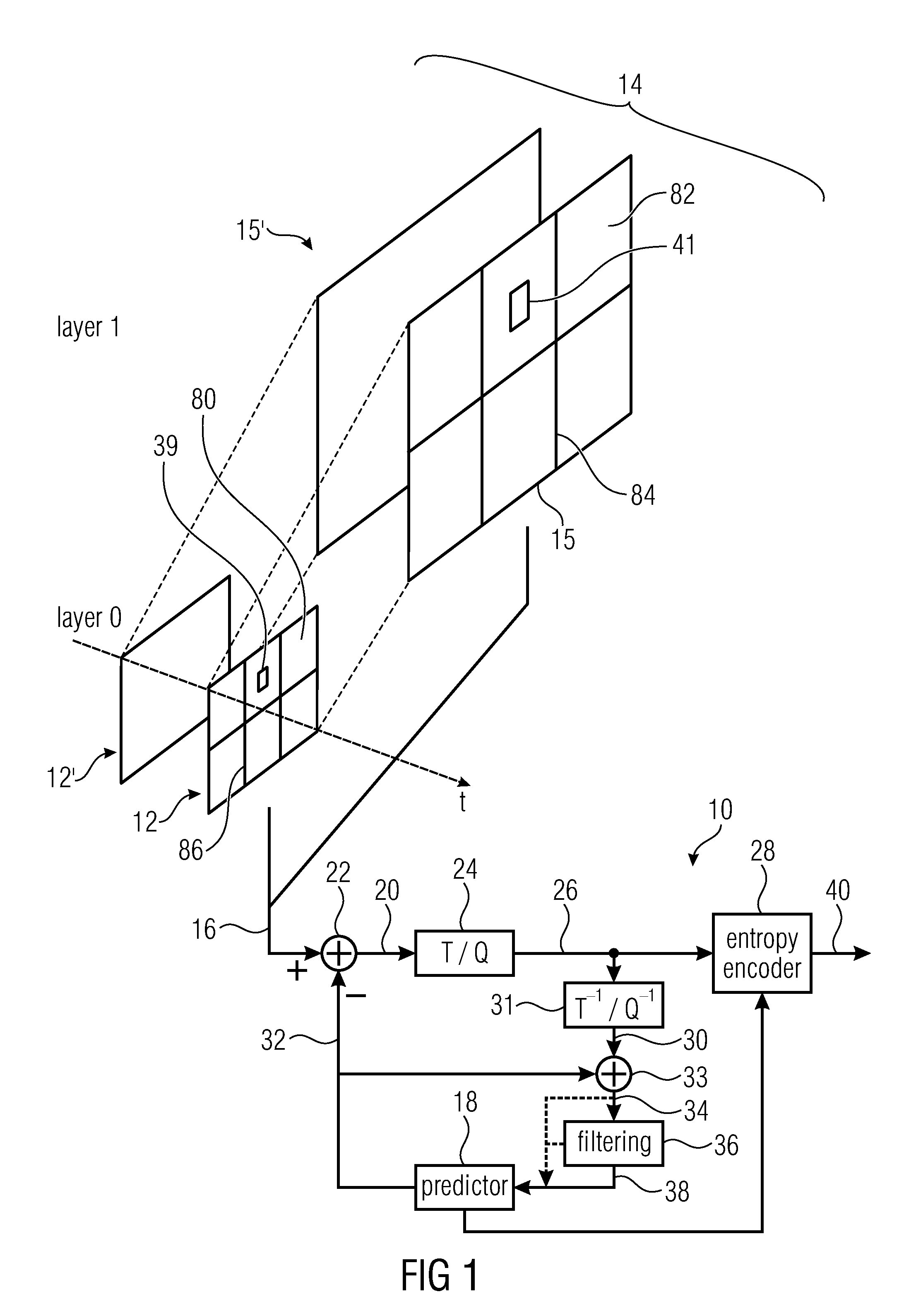Efficient scalable coding concept
a coding concept and efficient technology, applied in the field of scalable coding concepts, can solve the problems of cumbersome and computationally complexsteadily doing so, negatively affecting the degree of parallelism achievable in parallel processing of inter-dependent layers, and the video decoder is unable to appropriately schedule the decoding threads, so as to improve the management overhead, and reduce the burden on the decoder
- Summary
- Abstract
- Description
- Claims
- Application Information
AI Technical Summary
Benefits of technology
Problems solved by technology
Method used
Image
Examples
case 1
[0322]In case 1 the transport layer decoder uses the following behavior:
[0323]Only the packets containing the base layer are extracted from the transport layer and input into the single-standard single-layer video decoder in a format specified in the video coding standard.
[0324]A specific embodiment is a transport stream decoder that extracts H.264 / AVC NAL units from an MPEG-2 transport stream by selecting only the stream that has the stream type “AVC video stream conforming to one or more profiles defined in Annex A of ITU-T Rec. H.264|ISO / IEC 14496-10 or AVC video sub-bit stream” assigned and inputs them to the H.264 / AVC video decoder in the byte stream format defined in Annex B of the H.264 / AVC specification. NAL units belonging to streams whose stream type is not equal to the stream type “AVC video stream conforming to one or more profiles defined in Annex A of ITU-T Rec. H.264|ISO / IEC 14496-10 or AVC video sub-bit stream” are discarded within the transport stream decoder. FIG. ...
PUM
 Login to View More
Login to View More Abstract
Description
Claims
Application Information
 Login to View More
Login to View More - R&D
- Intellectual Property
- Life Sciences
- Materials
- Tech Scout
- Unparalleled Data Quality
- Higher Quality Content
- 60% Fewer Hallucinations
Browse by: Latest US Patents, China's latest patents, Technical Efficacy Thesaurus, Application Domain, Technology Topic, Popular Technical Reports.
© 2025 PatSnap. All rights reserved.Legal|Privacy policy|Modern Slavery Act Transparency Statement|Sitemap|About US| Contact US: help@patsnap.com



